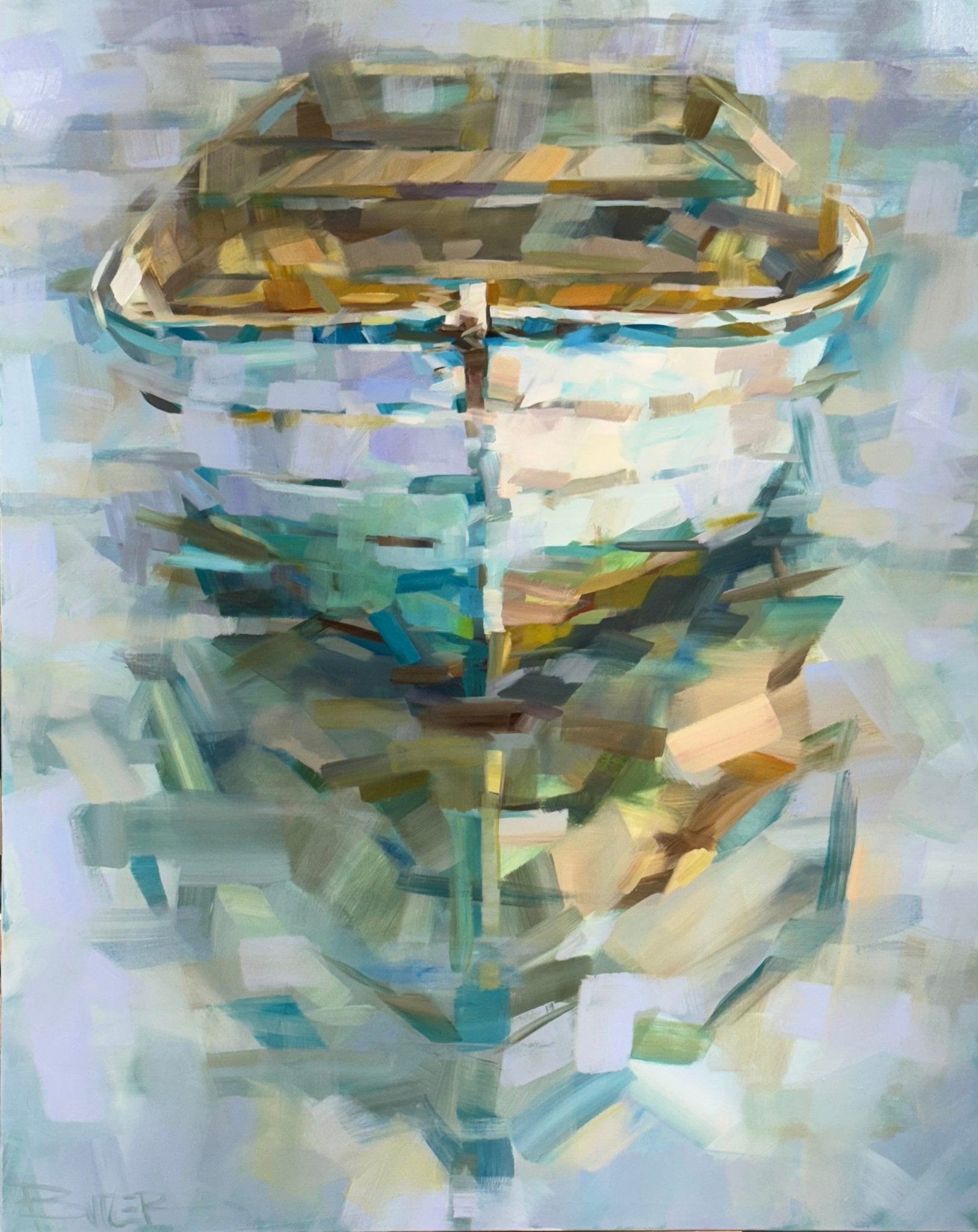Discovering All About Oil Paints: A Guide to Understanding Their Beauty and Value
Oil paints have astounded target markets for centuries, offering a glimpse into the imaginative mastery of different periods. Their abundant history is intertwined with cutting-edge methods and extensive psychological expression. Understanding the materials and approaches behind these artworks can boost appreciation. Furthermore, the marketplace for oil paintings provides chances for collection agencies and capitalists alike. As one explores this fascinating globe, the inquiry arises: what makes an oil painting absolutely valuable?
The History of Oil Painting: A Journey Via Time
Oil paint has origins that date back to ancient times, it absolutely grew throughout the Renaissance, when musicians discovered its adaptability and rich shade potential. Early examples can be traced to the 7th century, with techniques developing notably across societies. The medium came to be popular in Northern Europe in the 15th century, specifically through the jobs of artists like Jan van Eyck, who spearheaded its use for in-depth realism and vibrant tones. This period noted a separation from tempera paints, permitting for better depth and appearance. As oil paint spread, it affected numerous musicians, causing masterpieces by popular figures such as Leonardo da Vinci and Rembrandt. The medium's heritage proceeds, forming the art world well right into contemporary times.
Comprehending Oil Paints: Products and Techniques
As artists discover the globe of oil paints, they encounter a diverse range of products and strategies that define this tool. The main components of oil paint consist of pigments, which offer color, and drying out oils, such as linseed, that bind the pigments and assist in application. Various ingredients can modify the paint's texture and drying out time, enhancing adaptability. Techniques like glazing, where transparent layers are constructed up, and impasto, which entails applying thick paint, enable for various visual impacts. Additionally, using brushes, scheme blades, and even fingers can create unique appearances and coatings. Understanding these materials and methods allows musicians to fully share their creativity and accomplish the desired impact in their art work.
The Function of Shade in Oil Paints
Shade plays a critical duty in oil paintings, affecting both aesthetic charm and emotional vibration. Comprehending color theory fundamentals, consisting of the connections between shades, can boost a musician's capacity to communicate state of mind and environment. Furthermore, grasping shade blending techniques permits for greater depth and splendor in a paint's combination.

Shade Theory Fundamentals
Comprehending shade concept is vital for artists functioning with oil paints, as it develops the structure for developing unified and visually engaging structures. Color theory encompasses the research of how shades interact, the color wheel, and the relationships between primary, secondary, and tertiary colors. Artists use complementary colors to enhance contrasts and create centerpieces, while similar colors promote unity and cohesiveness within an item. In addition, the ideas of warm and amazing colors influence the perception of deepness and room in a painting. Comprehending these principles permits artists to adjust color efficiently, assisting the customer's eye and interacting their intended message. Proficiency of color concept inevitably enriches an artist's capability to convey feelings and ideas via their job.
Emotional Impact of Shade
The emotional influence of color in oil paintings plays an important function in how viewers view and link with artwork. Colors evoke specific feelings and moods, affecting the viewer's emotion. Cozy tones like reds and oranges can develop a sense of warmth and power, while awesome tones such as blues and greens often stimulate calmness or introspection. Artists purposefully choose shade palettes to boost narrative elements, directing the audience's emotional trip. The saturation and contrast of shades further intensify these impacts, attracting interest and creating focus. Eventually, the interaction of colors in oil paints not just enhances their aesthetic charm yet likewise acts as an effective medium for emotional expression, enriching the viewer's experience and interpretation.
Color Combining Techniques
While lots of elements of oil painting add to the general make-up, understanding shade blending strategies is vital for attaining desired effects and depth. Shade blending can be approached via numerous methods, consisting of the additive and subtractive processes. Additive mixing includes combining shades of light, while subtractive mixing depends on pigments, where colors blend to develop brand-new tones. Artists frequently utilize a minimal palette to create harmonious works, recognizing the relationships between primary, second, and tertiary shades. Methods such as glazing and scumbling even more enhance depth and luminance. By masterfully mixing shades, a musician can evoke emotions, produce focal factors, and attain a feeling of realism, eventually raising the painting's visual and psychological effect.
Famous Oil Painters and Their Iconic Functions

Well known for their proficiency of color and method, oil painters have developed a few of one of the most celebrated artworks in history. Prominent musicians like Vincent van Gogh mesmerized audiences with his stirring brushwork in "Starry Night," while Claude Monet's "Perception, Daybreak" prepared for Impressionism. Leonardo da Vinci's "Mona Lisa" stays an enduring symbol of artistic wizard, showcasing his skill in capturing human expression. Rembrandt's "The Evening Watch" illustrates his innovative usage of light and shadow. Various other notable numbers consist of Pablo Picasso, who revolutionized contemporary art with his strong testing in jobs like "Les Demoiselles d'Avignon," and Georgia O'Keeffe, whose vibrant representations of landscapes and blossoms aided specify American website innovation. Each artist's one-of-a-kind style contributed significantly to the oil painting landscape.
Exactly how to Review the Top Quality of an Oil Paint
Evaluating the high quality of an oil painting involves a careful assessment of craftsmanship techniques, in addition to an evaluation of color and make-up. Observing brushwork, layering, and the application of paint can reveal the musician's skill degree. In addition, the interaction of shades and the total plan of elements add considerably to the paint's aesthetic worth.
Analyzing Workmanship Methods
A thorough evaluation of craftsmanship techniques is essential for establishing the quality of an oil paint. Evaluators ought to first analyze the application of paint; thick, distinctive brushstrokes might suggest a knowledgeable hand, while overly consistent applications might indicate an absence of deepness. oil paintings for sale. The layering technique is additionally vital; the existence of glazes and differed thickness can boost luminance and intricacy. In addition, the quality of the materials used, such as the canvas and pigments, plays a significant function in resilience and general visual. Attention to information in components like edges and shifts between shades shows the musician's dedication to their craft. Ultimately, these techniques contribute to the painting's emotional effect and market value, offering as indicators of the artist's skill and intent
Analyzing Color and Make-up
While evaluating the top quality of an oil paint, one have to concentrate on the interplay of color and composition, as these components are essential to the artwork's general influence. Color options can develop and evoke feelings state of mind; for that reason, the artist's combination must be examined for harmony and comparison. A healthy composition directs the customer's eye and develops a sense of unity. Artists commonly utilize methods like the guideline of thirds or leading lines to improve visual rate of interest. Furthermore, making use of light and shadow can add deepness, improving the three-dimensionality of the paint. Eventually, a successful oil paint weds color and composition, involving the audience and inviting a much deeper gratitude of the artist's vision and method.
Taking care of and Preserving Oil Paintings
Correct treatment and preservation of oil paintings is important for preserving their integrity and longevity. To safeguard these art work, it is crucial to show them far from direct sunshine, which can trigger fading and discoloration. Maintaining a stable atmosphere with controlled temperature level and moisture further help in preventing damage. Cleansing need to be done carefully using a soft, completely dry cloth, staying clear of any kind of harsh chemicals that might harm the paint or varnish. Regular examinations for indicators of damage, such as flaking or cracking, are advisable. When storing or transporting oil paintings, proper extra padding and framework are required to avoid physical harm. Ultimately, attentive treatment adds to the visual appeal and worth of oil paints with time.
The Market for Oil Paints: Gathering and Spending
Comprehending the marketplace characteristics for oil paintings is important for collection agencies and investors alike. The worth of these artworks is influenced by various elements, including the musician's track record, historical importance, and existing fads. Collection agencies typically look for items that resonate personally while thinking about potential appreciation in worth. Galleries and public auctions work as primary venues for trading, with prices changing based on demand and rarity. Investing in oil paintings calls for research study right into the market, along with an understanding of credibility and provenance. In addition, emerging musicians might supply chances for substantial returns, while established names can command high prices. Generally, a critical approach to accumulating can produce both aesthetic satisfaction and economic incentives.

Regularly Asked Inquiries
What Are the Environmental Effects of Oil Paint Materials?
The ecological effects of oil painting products include the launch of unpredictable natural compounds (VOCs), hazardous waste generation, and resource extraction for pigments. These variables add to air pollution and environmental deterioration, increasing problems amongst ecologically mindful musicians and consumers.
How Do Various Canvases Influence Oil Paint Outcomes?
Different canvases influence oil paint results significantly. Appearance, surface area, and absorbency top quality can modify paint application, drying out times, and color vibrancy. Artists frequently choose specific canvases to achieve desired results and boost their creative expression.
Can Oil Paintings Be Restored if Damaged?
Oil paintings can undoubtedly be recovered if damaged. Professional conservators utilize various methods to fix tears, tidy surface areas, and address staining, making sure that the art work preserves its initial appeal and worth for future generations.
What Are the Signs of an Initial Oil Painting?
The indicators of an original oil paint consist of noticeable brush strokes, structure variants, and an uneven canvas weave (oil paintings for sale). Additionally, authenticity might be verified via provenance, trademarks, and the presence of a varnish layer special to oil mediums
How Has Technology Influenced Modern Oil Paint Techniques?
Innovation has significantly affected modern-day oil painting methods by presenting digital devices for preparation, enhanced materials for appearance and durability, and on the internet systems for offering and sharing art, thereby expanding artists' imaginative possibilities and target market get to. Oil paint has roots that date back to ancient times, it truly thrived throughout the Renaissance, when artists uncovered its versatility and abundant color capacity. The emotional effect of shade in oil paints plays an essential duty in just how viewers attach and view with artwork. While numerous facets of oil painting add to the total structure, grasping color mixing techniques is essential for accomplishing preferred results and deepness. Examining the quality of an oil paint includes a cautious evaluation of craftsmanship methods, as well as an evaluation of shade and composition. While evaluating the quality of an oil paint, one must concentrate on the interplay of color and structure, as these aspects are fundamental to the art work's general impact.